SEOUL – We may know and love Korea for its K-pop and K-dramas, but Korean cuisine offers just as much variety, excitement and visceral satisfaction.
Although, for many foreigners, the experience of Korean food tends to center around cultural mainstays – BBQ, fried chicken and kimchi stew, just to name three very ready examples – leading some to malign Korean food as somewhat lacking in variety.
But we all know that’s not true. To get a deeper grasp of a country’s cuisine, we must take to the streets and the markets – where we recommend you try these 10 iconic Korean street food.
1. Tteokbokki
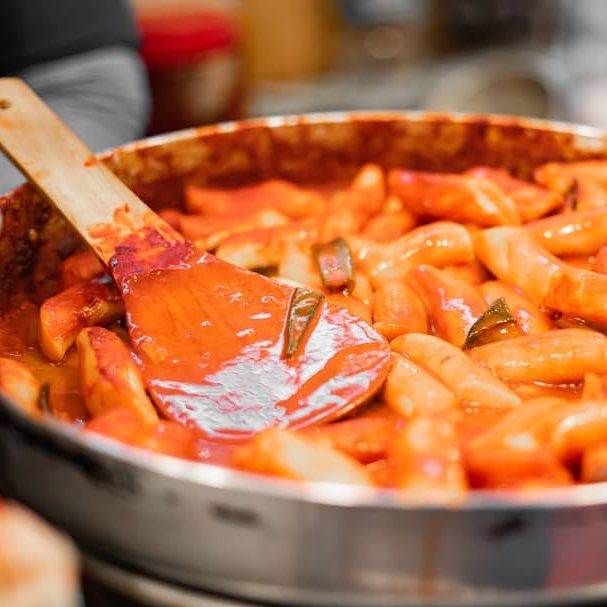
Image by nielsenbryanuy via Instagram.
A beloved dish of many, Tteokbokki is surely one of the contenders of the title of ‘quintessential Korean dish’. While many today enjoy this rice cake dish drenched in a red sweet chilli sauce, Tteokbokki actually dates back to the Joseon dynasty.
Today, some of the most commonly featured ingredients that go with Tteokbokki are boiled eggs and fish cakes, all topped with a combination of sesame seeds and scallions. You’ll find many street-side stalls selling this along Myeongdong with novel creations such as Mozzarella and Tteokbokki skewers or Sausage and Tteobokki skewers.
2. Hotteok
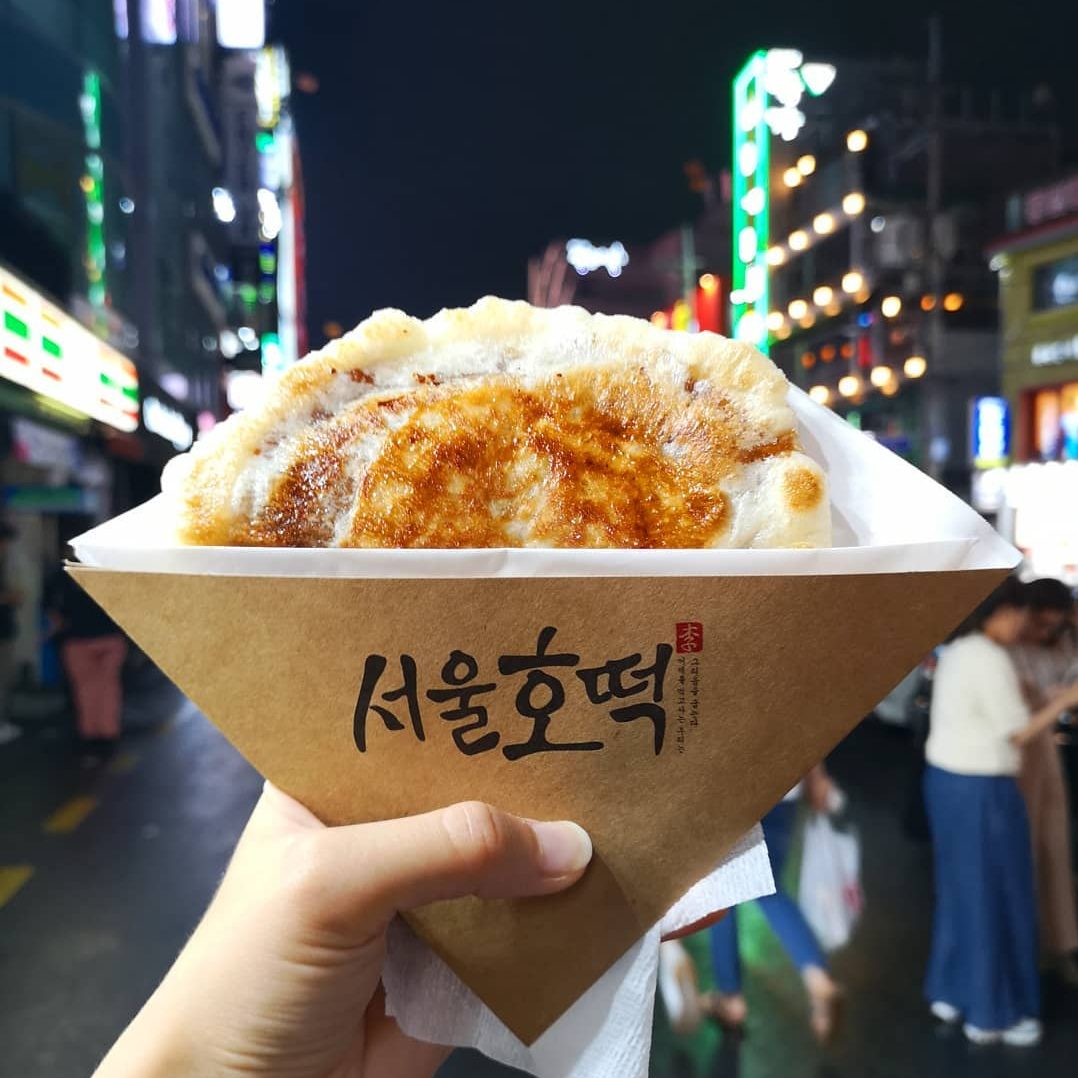
Image by ines_orti via Instagram.
Hotteok is a sweet treat not to be missed when you’re in Seoul, or anywhere else in South Korea. My body can attest to it that winter is the best time to get enjoy Hotteok where its warmth just fills your body.
A pancake stuffed with a mixture of brown sugar, honey, peanuts, and cinnamon is pan-fried on a hot greased griddle to give it a nice crispy skin that makes for a satisfying mouthful. You can find savoury versions of Hotteok, though nothing quite beats the original for us.
3. Pajeon
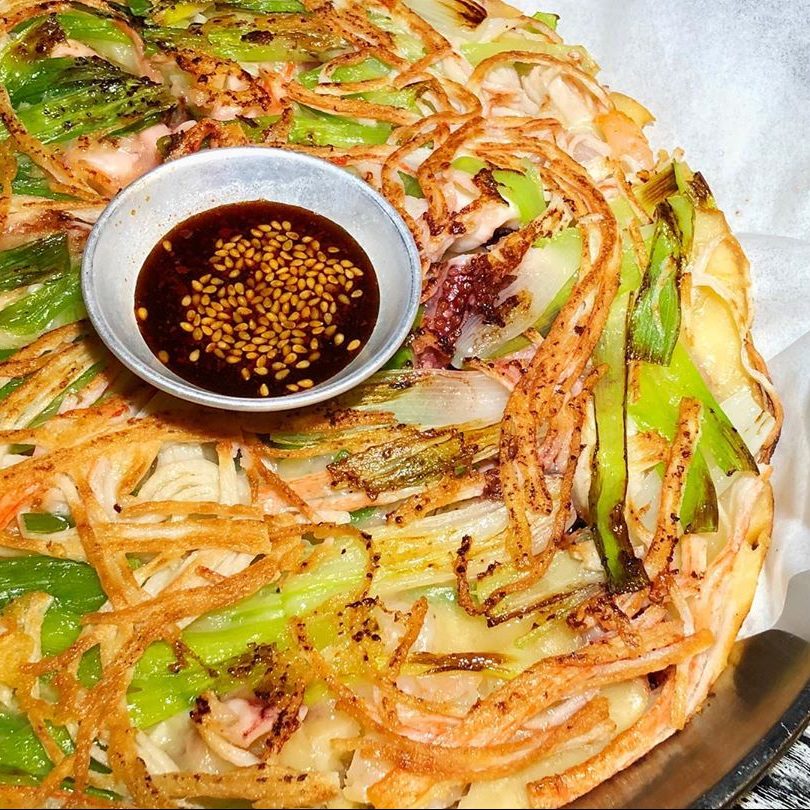
Image by tabemononado via Instagram.
Pajeon is a pancake dish that you almost certainly can find on every table at most Korean restaurants you go. Not the usual fluffy pancake stack with honey drizzle, Pajeon is a savoury pancake with scallions as its core ingredient.
Revolving around scallion as the anchor are a variety of ingredients depending on the flavour of Pajeon, ranging from beef to pork, kimchi, with seafood in particular being the supremely popular flavour of choice.
4. Chimaek
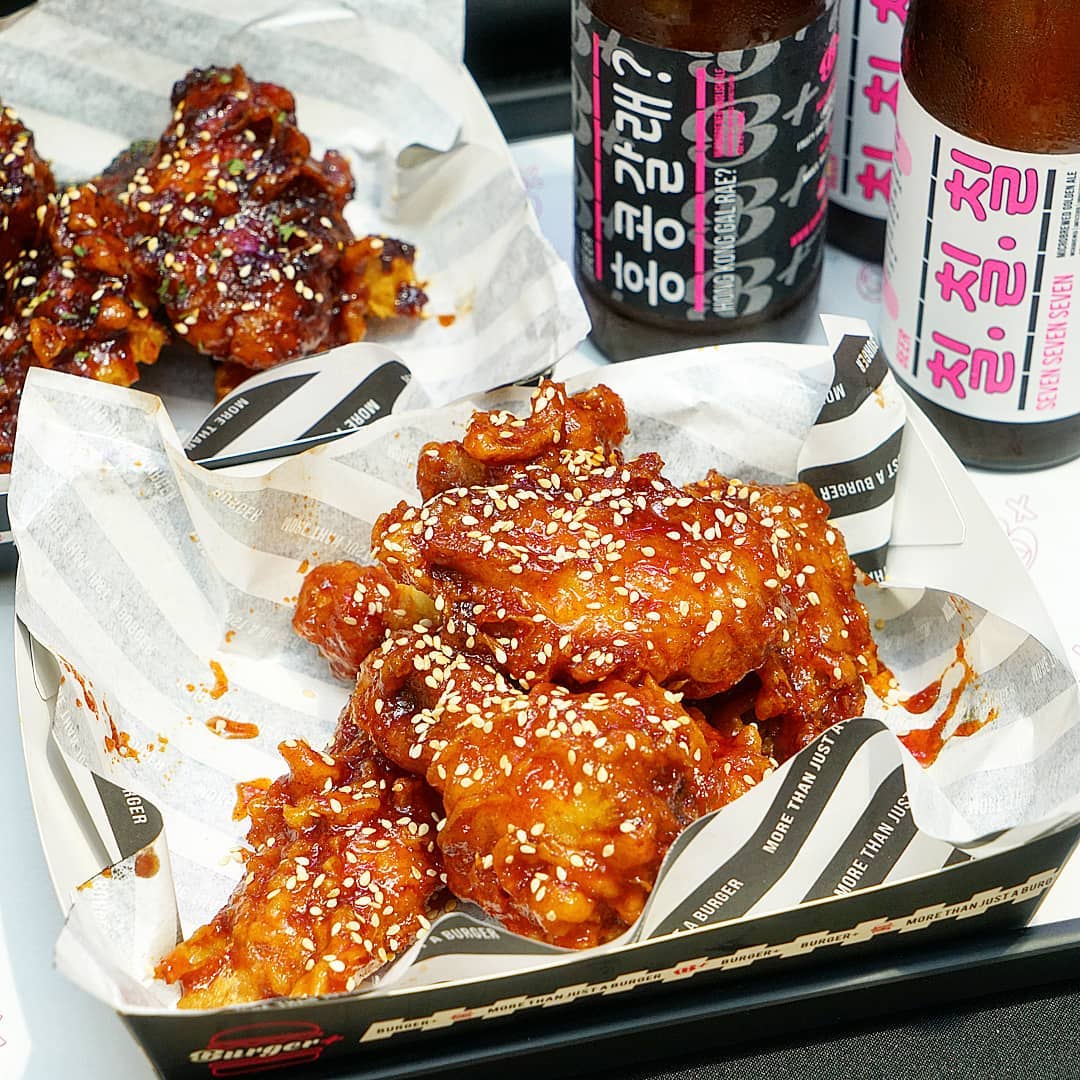
Image by pinkypiggu via Instagram.
Chimaek celebrates one of the most heavenly food pairings known to man – fried chicken and beer. The word and concept originates from a combination of “chi” from chikin (chicken) and “maek” from maekju (beer).
Starting in the 1970s, this food pairing has been a staple in Korean cuisine which is surprising since neither of the individual components of chicken nor beer originated in Korea. But somehow, together, Chimaek has evolved to be a favourite amongst the locals. It has reached such a point that there’s a festival devoted to chicken and beer that happens in Daegu, and most definitely a must-try when you’re in Korea.
5. Soondae/Sundae

Image by _hyunju_k via Instagram.
Not to be confused with the sweet dessert beloved by everyone, Soondae or Sundae is a type blood sausage in Korea. Often made by boiling or steaming cow’s or pig’s intestines which are stuffed with ingredients like squid or fish but the most typical variety sold are made with pig’s intestines that are stuffed with dangmyeon (cellophane or glass noodles), barley, and pig’s blood.
Again, not the most Instagrammable dish out there, but Soondae makes it up from being packed full of flavour, though we must admit that it’s not a dish for everyone. If you love it however, there’s a Soondae Town that’s located in Sillim-dong, Seoul where you can find a host of various Soondae to your heart’s content.
6. French Fry Hotdog
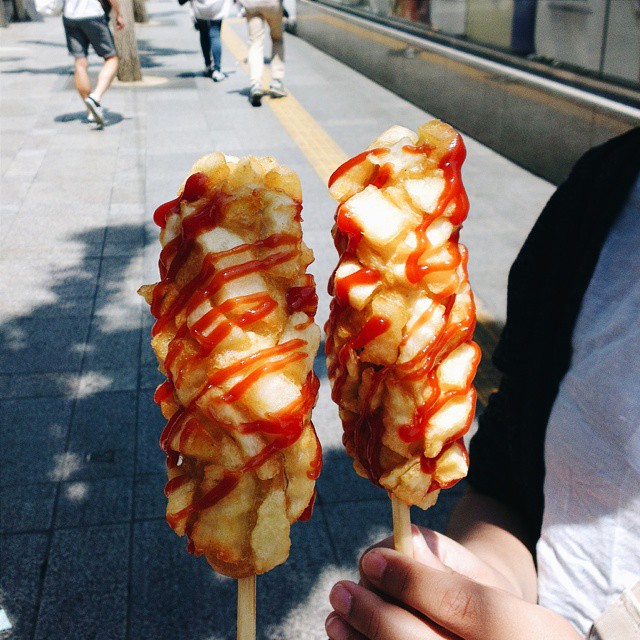
Image by orangeccane via Instagram.
The French Fry Hotdog was certainly not one of the dishes I was expecting to see so abundantly available in the world of street food in Seoul. This is even more bizarre than Chimaek as you can hardly find it in restaurants or small eateries.
Though it’s not seen in restaurant establishments, there are street side stalls littered all over Seoul where you can grab your hands on one of these. Basically a corn dog or a hotdog coated with a baked with a bunch of chopped, crispy French fries, and topped with ketchup, it works as a great fried snack, especially for the kids.
7. Tornado Potato

Image by myk.cn via Instagram.
You’ll definitely spot every one or two people on the streets with a large stick of potato spiral in his or her hand. Known as the Tornado Potato or Twister Potato, a whole potato is sliced into a giant spiral and later skewered either on a wooden stick or sometimes, a sausage.
The flavourings have become more complex and innovative with time, and it’s not unusual today to be offered a myriad of seasonings from cheese, to chilli, onion, and honey. A cross between French fries and potato chips, the Tornado Potato remains a crowd favourite.
8. Mandu

Image by mandou797 via Instagram.
Whether pan-fried or steamed, Mandu (dumplings) is a classic street food in Korea. It’s not difficult to spot stalls with huge steamer baskets or smell the fried fragrance emanating from the dumplings sizzling on the pan.
At first glance, Mandu doesn’t seem like it differs much from the kind of dumplings you’ll find in the East Asia region, but one bite into it and you’ll notice a world of difference. The filling is what sets Mandu (in general) apart from the various dumplings you get from China or Japan. Filled with a combination of minced meat and tofu along with spices such as garlic and ginger and not forgetting green onion, Mandu is often served with a side of kimchi and dipping sauce.
9. Gimbap

Image by hana_flying via Instagram.
Also stylised as “Kimbap”, this popular street food is aptly nicknamed ‘Korean sushi’. For Korea to have develop their own version of the sushi is not all that surprising when you consider Korea’s close proximity to Japan, cultural exchanges and influences across the straits have happened over the many generations.
In Korea, Gimbap is made using short-grain white rice, though you can find variations which adopt brown rice, black rice, and other forms of grain rice. Though similar in appearance, a closer inspection will reveal subtle differences between Gimbap and its Japanese counterpart.
The rice found in Japanese sushi is most often made with vinegar while sesame oil is used in Gimbap. You’ll not find sashimi (fresh raw fish or meat slices) wrapped within Gimbap but a slew of cooked ingredients such as egg, ham, and a julienne of carrots and cucumbers, all topped with a heap of sesame seeds.
10. Bungeoppang
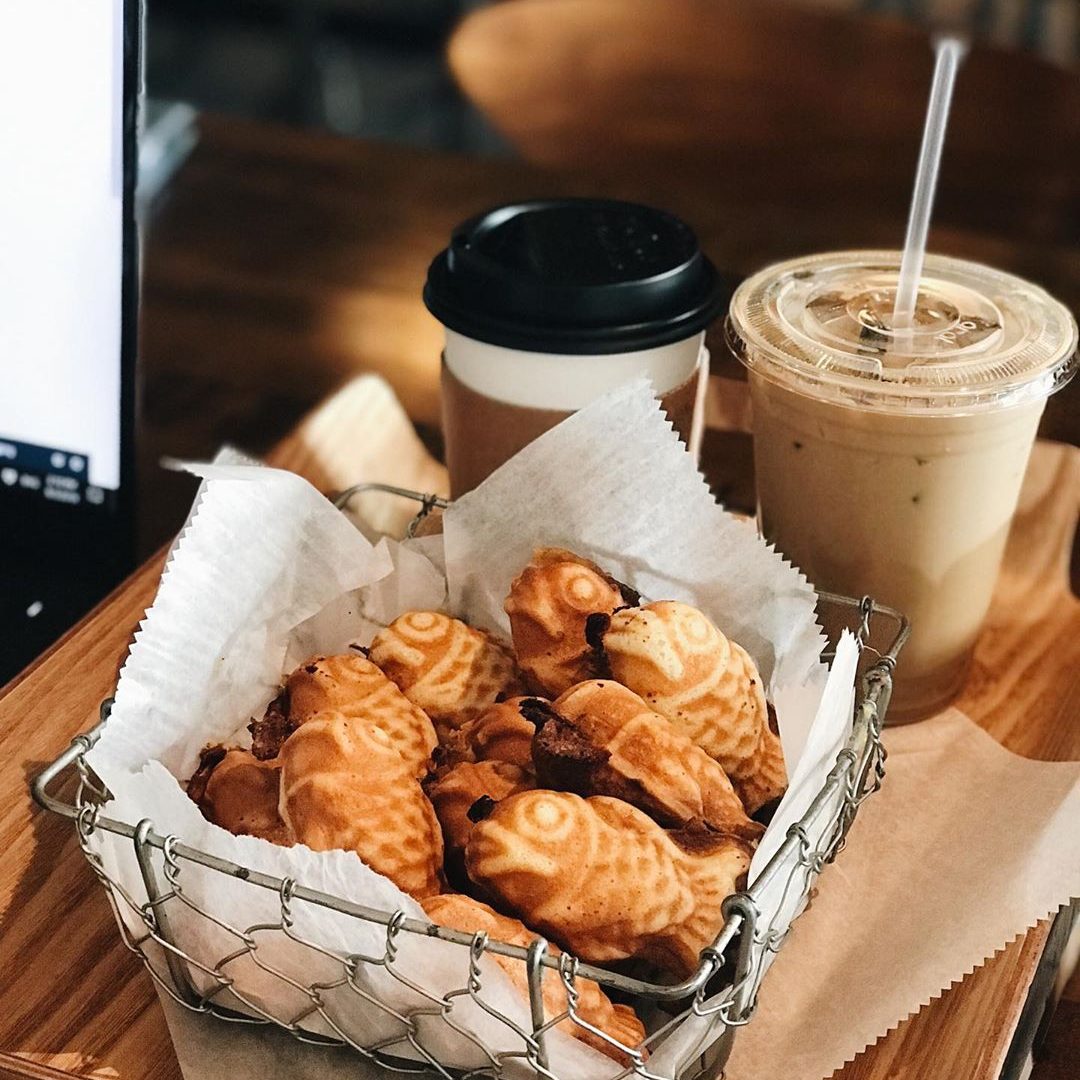
Image by euginoms via Instagram.
There’s no more fitting way to end off this list with dessert and Bungeoppang has got to be one of the cutest ones out there. Shaped similarly to the Japanese Taiyaki, this is South Korea’s answer to the Japanese street food dessert.
Featuring a waffle batter that is moulded into the shape of a goldfish, Bungeoppang is most often filled with a red bean paste, though as with most of the items on this list, we are seeing more innovations in terms of flavour such as cream cheese and custard. With a crispy exterior and a sweet gooey filling, Bungeoppang has no shortage of fans among locals and tourists alike.




